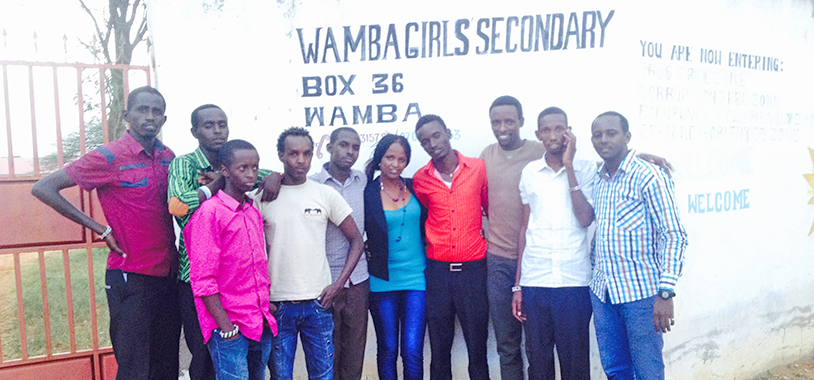Save the Elephants Education Program has, in the past, largely focused on primary schools in and around Samburu County, Kenya. To give our education and awareness program some wings and cover more ground, we have teamed up with Samburu University Students Association team (SUSA) to visit secondary schools with the conservation message. SUSA, made up of a group of university students brought up in Samburu, goes around primary and high schools during school holidays giving motivational talks.
The debut month, May (18th and 19th) 2015, saw STE’s awareness team accompanied by officials from Samburu National Reserve (SNR) and ten students. It was going to be a busy two days; five high schools in two different towns within Samburu County were on the itinerary. They were; Gir Gir Mixed High School, Uaso Secondary School (Archers town), Wamba Girls High School, Wamba Boys High School and Wamba Mixed High School (Wamba town).
The highly charged and engaging sessions ran for four hours in every school. Six speakers mainly tackled conservation and career related topics. The students heard inspiring stories of how the SUSA members had overcome great odds to get to university and pursue the careers of their dreams. The environmentalists urged them to take care of the environment and the wildlife assuring them that the environment would in turn take care of them. A budding lawyer in the group explained the relationship between conservation and law. He spoke of wildlife laws and encouraged the eager learners to be community watchmen, reporting any wildlife crime and offenders such as poachers.
Mike Lesiil from SNR spoke about challenges rangers face while protecting wildlife and pleaded for support from students to help spread awareness on respecting wildlife and the parks the live in. It was quite clear that the trip was living up to and beyond expectations. Participants had questions that challenged the panelists to dig deeper with their explanations and contextualization. At Wamba Girls, they were keen to know the tangible individual benefits of being good custodians of wildlife. Jerenimo Lepirei, STE’s Research and Community Awareness Officer, offered;
“Wildlife is our own heritage. If we destroy wildlife, we are killing ourselves in many different ways. Conservancies also provide an avenue for students studying conservation to give back and hone their skills.”
He took the students back to 2008 and used maps to illustrate the spate of elephant slaughter between 2008 and 2012. Shock and disappointment registered on their faces on learning that about 2000 elephants were killed over that four-year period. He talked about the crisis elephants are facing now with poaching, and efforts needed to stop the crisis. The three-minute PSA featuring Chinese actress Li Bing Bing, “hunted” drove the point home showing how STE is collaborating with other partners to increase international awareness. Jerenimo then introduced a skit to show how conservation directly supports the economy of Samburu, from rangers to hotel workers and businessmen.
All the sessions were rounded up with a screening of BBC’s Secret Life of Elephants. It was inspiring to hear the students in every school pledge to either revamp or start active wildlife clubs.
Meanwhile, back at STE’s research camp in Samburu, guests from near and far are loving our new Visitor’s Centre, opened last month by none other than Chelsea Clinton!


